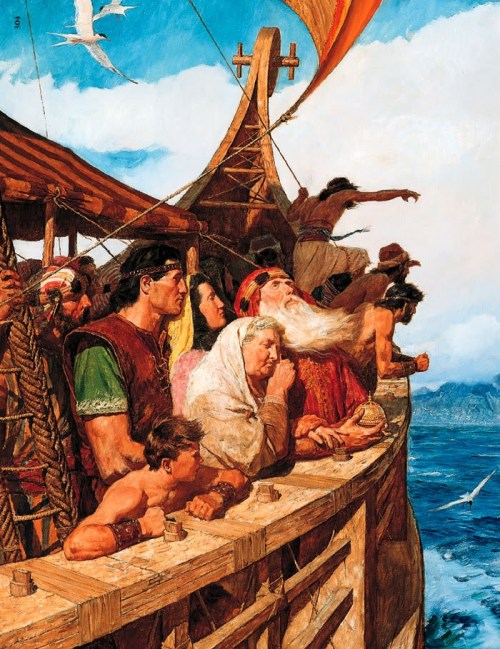The logical epilogue to the Pentateuch should be the book of Joshua, but I’m going to skip over that to the book of Judges. Sure, Joshua perfectly closes out the Exodus like html tags, with a lesser parting of water for the Israelites to cross over on dry ground (Joshua 3:14-17), and Joshua’s encounter with the Lord outside Jericho (Joshua 5:13-15) corresponds to Moses and the burning bush. Judges, however, is the book I would argue has the most similarity to the books of Moses, particularly Genesis. Since both books depict a lawless period, one before the Law was given, the other at a time when it has been largely abandoned, I could go so far as to say Judges could have originated as an alternative to Genesis, so much so that I would call it “Genesis Gone Wrong.”
Specifically, Judges appears to call to mind the accounts of Abraham and Lot in Genesis 18 and 19. Just as the angels visited the Patriarch Abram near the great trees of Mamre, the angel of the Lord comes to Gideon under an oak in Ophrah (Judges 6:11). Both Abram and Gideon use the phrase “If I have found favor in your eyes” (Genesis 18:3, Judges 6:17) before offering him a sacrificially acceptable meal. Lastly, just as Abram tests God’s patience by repeatedly begging him to spare Sodom with increasingly fewer conditions, so Gideon increasingly raises the conditions of his testing, practically quoting Abram in the process (“Do not be angry with me. Let me make just one more request.” Judges 6:39). From there the parallels diverge, Gideon goes on to defeat Midian while the hospitality narrative that follows immediately in Genesis doesn’t appear until later in the book of Judges.
Before that, however, we do resume with parallels to the sons of Abraham. Similar to Ishmael, the son of a foreign bondwoman driven out of his home, Jephthah the son of a prostitute is driven away by his brothers (Judges 11:1-3). In contrast to Isaac, however, Jephthah vows to offer a burnt offering to YHWH and tragically follows this sacrifice through with his own daughter (Judges 11:30-39); sadly, there is no deus ex machina or ram caught in the thicket here.
The parallels are then interrupted by the account of Samson, but resume again in Chapter 19, which corresponds to the same chapter of Genesis. Here we find a hospitality narrative that seems to bridge the differences between Lot in Sodom and Baucis and Philemon from Ovid’s Metamorphoses. While this story lacks the two gods, it contains similarities to Ovid not found in Genesis. Although the pair of angels effortlessly find Lot and thus a place to stay, the Levite and his concubine in Judges are not so fortunate. Like Ovid’s Zeus and Apollo (“a thousand houses they approached looking for rest, a thousand houses were locked and bolted. But one received them.” Metamorphoses Book VIII), they sit in the city square but nobody will take them in for the night, except for an old man. What happens next is nearly verbatim from the Genesis story, some wicked men of the city surround the house and demand to sexually violate the visitor. Like Lot, the owner offers the mob his virgin daughter, but the men wouldn’t listen. Unlike Lot, however, the Levite does send out his concubine, who is then horribly raped to death.
Even though in the narrative’s chronology the Law has already been given, the Judges seem completely unaware of it. Ironically, the Patriarchs precede the giving of the Law yet the inhabitants of Genesis seem to follow it intuitively. While much of the same questionable morality like human sacrifice permeates both books, apologists have a much easier time addressing these moral lapses in Genesis than in Judges. Divine intervention in the binding of Isaac makes for good Sunday school material, while the difficult story of Jephthah is rarely mentioned in church, if at all.
Although not a “lawbook” like the other four books in the Torah, when weighed against the parallels of the Judges it becomes clear why Genesis is still very much a book of the Law. The book of Judges is as lawless as the judges themselves, and they seem to only teach us by bad example. Obviously the Samaritans ignored everything after the Pentateuch, but curiously the Jewish scholars seem to have forgotten most of them except Samson in their subsequent literature, like the Talmud. This trend continues not just into the New Testament (except for a passing reference in Hebrews 11:32), but also into every other faith tradition that borrowed heavily from the Patriarchs, from Islam to Baha’i and Mormonism. I think that’s a great loss for them, as the book of Judges serves as an interpretive key of sorts to some of the difficult passages of Genesis. The sex-obsessed Talmudic interpretation of Sodom and Gomorrah which is so prevalent today, for instance, isn’t quite as convincing when read through the lens of the Levite and his concubine.


